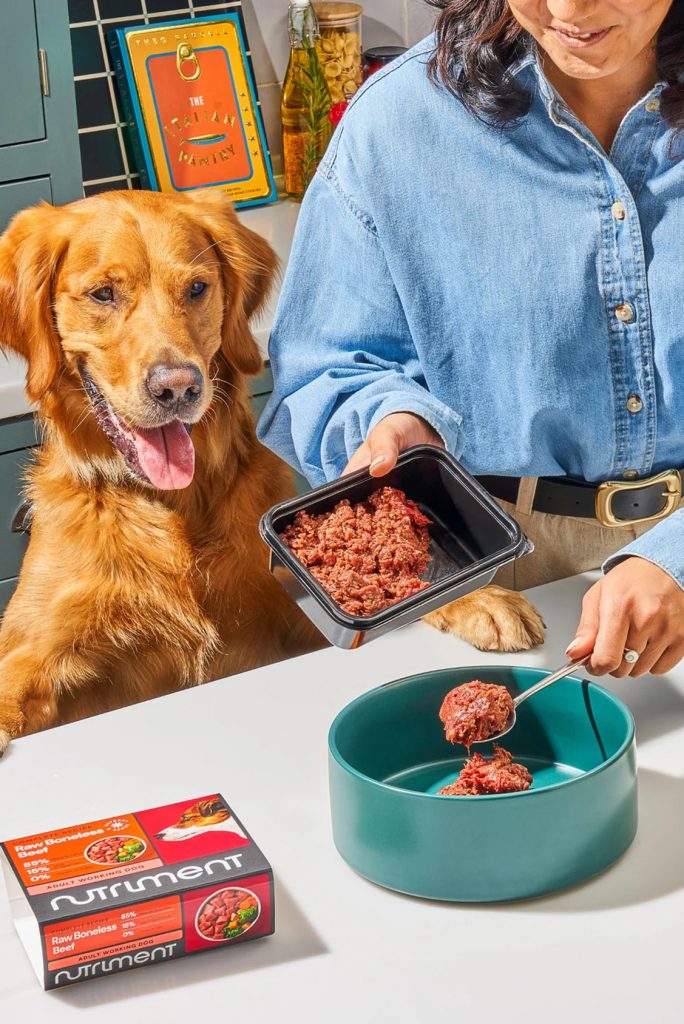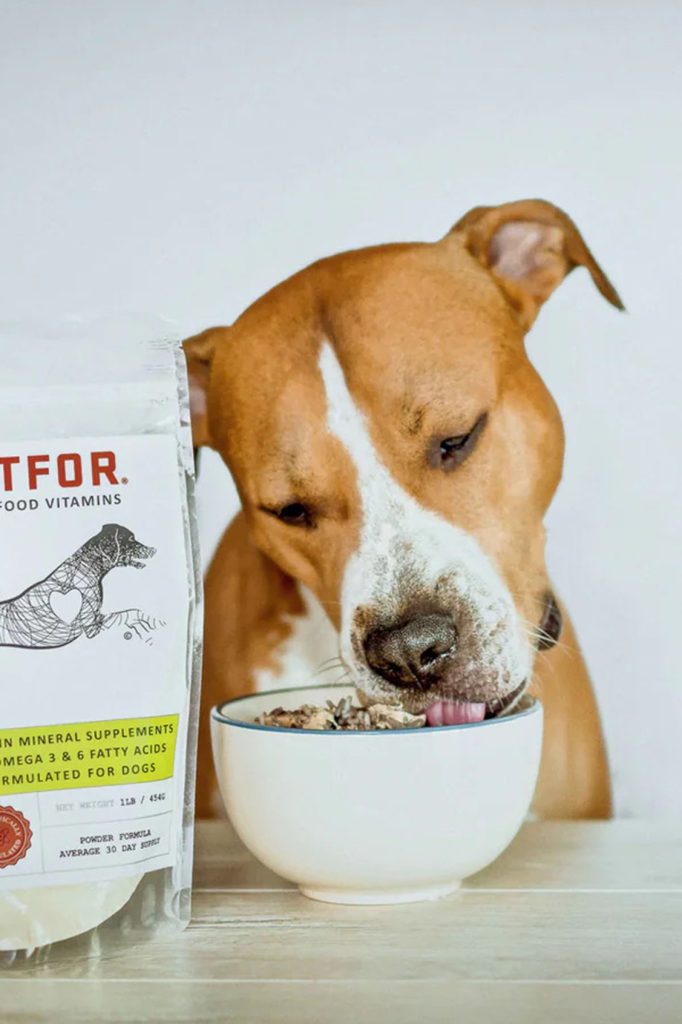Feeding your dog the right diet is one of the most important decisions you’ll make as a pet owner. With so many options—homemade meals, kibble, raw food, and wet food—it can be overwhelming to decide what’s best. Should you cook for your dog at home or stick with high-quality commercial food? Which diet offers the best nutrition, convenience, and safety?
We’ll explore the pros and cons of homemade and commercial dog food, who each option is best for, and recommend products that ensure a balanced and healthy diet for your furry friend.
🥩 Homemade Dog Food: A Fresh & Natural Approach
✔️ Pros of Homemade Dog Food
✅ Full Control Over Ingredients – You decide what goes into your dog’s meals, avoiding artificial additives and preservatives.
✅ Better for Dogs with Allergies – If your dog has food sensitivities, homemade meals can eliminate allergens.
✅ Fresh and Whole Ingredients – Cooking at home ensures high-quality proteins, vegetables, and healthy fats.
✅ Customizable Diet – Adjust meals based on your dog’s age, weight, and health conditions.
❌ Cons of Homemade Dog Food
⚠️ Nutritional Imbalance – Many homemade diets lack essential vitamins and minerals, leading to deficiencies.
⚠️ Time-Consuming – Preparing fresh meals daily requires significant time and effort.
⚠️ Shorter Shelf Life – Unlike kibble, fresh food must be stored properly and consumed quickly.
🐾 Who Should Choose Homemade Dog Food?
👉 Owners who have time to research and prepare balanced meals.
👉 Dogs with specific dietary needs or allergies.
👉 Pet parents who prefer a natural, additive-free diet.
🍲 How to Ensure a Balanced Homemade Diet
If you choose to cook for your dog, consult a veterinarian or pet nutritionist to ensure the right balance of:
• Protein: Chicken, beef, turkey, fish, eggs.
• Carbohydrates: Brown rice, sweet potatoes, quinoa.
• Healthy Fats: Fish oil, coconut oil, olive oil.
• Vitamins & Minerals: Leafy greens, carrots, pumpkin.
🛍 Recommended Supplements for Homemade Diets:
• BalanceIT Canine Supplement (Amazon, Vet clinics) – Ensures homemade food meets nutritional needs.
• Salmon Oil for Dogs (Chewy, Petco) – Provides essential Omega-3 fatty acids.
🍖 Kibble: The Convenient & Complete Option
✔️ Pros of Kibble (Dry Dog Food)
✅ Nutritionally Balanced – High-quality kibble is formulated to meet all of a dog’s dietary needs.
✅ Convenient & Long Shelf Life – Unlike homemade food, kibble is easy to store and serve.
✅ Supports Dental Health – The crunchy texture helps reduce plaque and tartar buildup.
✅ Affordable & Widely Available – Many high-quality options fit different budgets.
❌ Cons of Kibble
⚠️ Processed Ingredients – Some brands use fillers, artificial flavors, and preservatives.
⚠️ Lower Moisture Content – Dry food lacks hydration, so dogs need plenty of water.
⚠️ Quality Varies – Some kibble brands use low-quality meats and grains, leading to obesity or allergies.
🐾 Who Should Choose Kibble?
👉 Busy owners who need a hassle-free, nutritionally balanced option.
👉 Dogs who require specific dietary formulations (e.g., weight management, joint support).
👉 Owners who want a cost-effective and long-lasting food source.
🥇 Best Kibble Brands for Optimal Nutrition
🛍 Top-Rated Kibble for Dogs:
• Orijen Original Dry Dog Food (Amazon, Chewy) – High in protein with whole-prey ingredients.
• Royal Canin Veterinary Diet (Vet clinics, Zooplus) – Tailored for dogs with medical needs.
• Taste of the Wild High Prairie (Petco, Walmart) – Grain-free and rich in natural proteins.

🥩🍖 Raw Diet (BARF): A Natural but Controversial Choice
Some owners opt for a raw diet (Biologically Appropriate Raw Food or BARF), which consists of raw meat, bones, and vegetables.
✔️ Pros of a Raw Diet
✅ Mimics a Dog’s Ancestral Diet – Supporters believe raw food is closer to what dogs evolved to eat.
✅ Shinier Coat & Healthier Skin – Natural oils in raw meat promote healthy fur.
✅ Improved Digestion – No fillers or artificial ingredients.
❌ Cons of a Raw Diet
⚠️ Bacterial Contamination – Raw food carries risks of Salmonella & E. coli.
⚠️ Nutritional Imbalances – Requires careful meal planning and supplementation.
⚠️ Expensive & Requires Freezer Space – Storing raw meat takes up fridge and freezer space.
🛍 Recommended Raw Dog Food Options:
• Stella & Chewy’s Raw Blend (Amazon, Chewy) – Freeze-dried raw food for convenience.
• Primal Raw Frozen Dog Food (PetSmart, Zooplus) – High-quality frozen raw meals.
🍛 Wet (Canned) Food: A Tasty & Hydrating Option
✔️ Pros of Wet Food
✅ Higher Moisture Content – Great for hydration and kidney health.
✅ More Appealing Taste – Picky eaters often prefer wet food over kibble.
✅ Easier to Chew – Suitable for senior dogs or those with dental problems.
❌ Cons of Wet Food
⚠️ More Expensive Than Kibble – Premium wet food costs more per serving.
⚠️ Short Shelf Life – Once opened, wet food must be consumed quickly.
🛍 Best Wet Dog Foods:
• Blue Buffalo Homestyle Recipe (Amazon, Petco)
• Hill’s Science Diet Wet Food (Vet clinics, Chewy)
🔄 Mixing Diets: Can You Combine Homemade, Kibble, and Wet Food?
Yes! Many pet owners mix different food types to provide variety. For example:
🐶 Kibble + Wet Food – Adds moisture and enhances taste.
🐶 Homemade + Kibble – Provides fresh ingredients with balanced nutrition.
🐶 Raw + Kibble – Some brands offer freeze-dried raw kibble blends.
If you mix diets, consult your veterinarian to avoid digestive issues.
Choosing the Best Diet for Your Dog – It’s All About Balance!
Choosing the right diet for your dog is not just about selecting one type of food over another—it’s about finding balance and catering to your dog’s specific needs. Whether you opt for homemade meals, kibble, raw food, or wet food, each has its own set of benefits and challenges. As a responsible pet owner, it’s essential to consider factors like your dog’s age, breed, activity level, allergies, and health conditions when making this decision.
Homemade Food: While cooking for your dog can provide you with complete control over the ingredients, it requires time, effort, and expert advice to ensure a nutritionally balanced diet. Consulting with a pet nutritionist is highly recommended to ensure you’re meeting all your dog’s needs. Homemade food is great for those who want to create fresh, additive-free meals and cater to their dog’s specific health requirements. However, it can be challenging to maintain balance without professional guidance.
Kibble (Dry Food): Kibble offers convenience and nutritional completeness, with the added benefit of long shelf life and easy storage. Premium kibble brands can be a wonderful option, especially when seeking a diet tailored to your dog’s health needs. Kibble is particularly suitable for owners who are looking for an easy-to-manage, long-lasting, and nutritionally consistent option. However, it’s essential to choose a high-quality brand, as cheaper kibble may contain unnecessary fillers or artificial ingredients.
Raw Food (BARF): A raw food diet can be an excellent option for pet owners interested in providing a more natural diet that mimics their dog’s ancestral eating habits. While raw food diets can offer nutritional benefits like improved coat condition and better digestion, they also carry risks such as bacterial contamination and the possibility of nutritional imbalances. If you choose to feed your dog raw food, it’s crucial to research properly and ensure that the diet is well-balanced and supplemented.
Wet Food: Wet food is an ideal option for dogs that may need extra hydration or those that have dental issues. It can be more palatable for picky eaters, and its soft texture is great for older dogs or those with sensitive teeth. However, wet food tends to be pricier than kibble and must be used promptly once opened, making it a less convenient option in some cases.

The key is variety and personalization.
In many cases, mixing different types of food can offer the best of all worlds. For example, mixing kibble with wet food or adding fresh ingredients to your dog’s diet can increase variety, taste, and nutrition. If you decide to mix foods, it’s important to introduce new foods gradually to avoid digestive upset. And as always, consult your veterinarian before making major changes to your dog’s diet. They can offer valuable insights into the best nutritional strategy for your dog based on their health, lifestyle, and any special dietary needs they may have.
Practical Tips for Dog Owners:
- Monitor Your Dog’s Weight and Health Regularly: Keep an eye on your dog’s weight, coat condition, and overall energy levels. Adjust their diet if necessary.
- Hydration is Key: Ensure your dog always has access to fresh water, especially if they eat dry kibble. Wet food can help with hydration but still offer water alongside.
- Treats Should Be Kept to a Minimum: Treats should not make up a large portion of your dog’s daily caloric intake. Choose healthy options like carrot sticks or kibble-based treats.
- Read Labels Carefully: Whether you’re buying kibble or wet food, always check the ingredient list for quality sources of protein, healthy fats, and low levels of fillers.
- Don’t Forget About Supplements: Some dogs may benefit from supplements like Omega-3 fatty acids or joint support.
Consult your vet for specific recommendations.
Choosing the best food for your dog is an evolving process. Your dog’s nutritional needs will change over time, depending on their age, activity level, and health status. As a pet parent, it’s essential to stay informed, make decisions based on your dog’s unique requirements, and provide a well-balanced, nutritious diet that supports their long-term health and well-being.
The journey to the right food choice for your dog may take some trial and error, but with the right guidance, you can ensure they are getting the nutrition they deserve. Whatever you choose, always remember that your dog’s health and happiness are at the heart of your decision-making. 🐕💚
💡 Have you already chosen the right food for your dog? What works best for your furry friend? Let us know in the comments!
